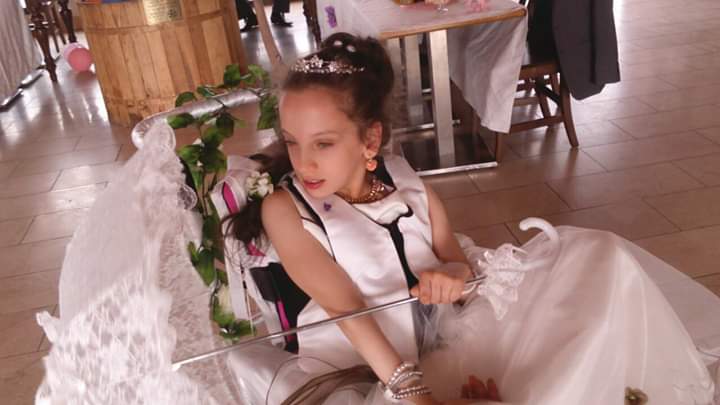The story of Grasiela
Simona is a 13 year old Polish girl who was born on the 21st April 2006 in Wexford General Hospital. At birth everything was fine but after 3 months developmental issues started to show. Simona has been attending Temple Street Children’s Hospital over the last 12 years where she has seen by neurologists, metabolic and genetic specialists. During this period all possible tests have been carried out to find out the cause of her condition. Some of this tests included (MRI scans, EEG, EMG, Muscle biopsy, Skin biopsy, and several kinds of blood tests. None of these tests gave a reason for her condition and all proved normal. On her recent visit to Temple Street Childrens Hospital to see her neurologist a second neurologist working in the clinic happened to see Simona and informed her consultant that she may have a condition which she had seen before in England in a patient. This second neurologist discussed the matter with Simona’s neurologist and it was decided to make an appointment with the genetic clinic and carry out further blood tests. These tests were carried out at Temple Street Children’s Hospital and send to Royal Devon and Exeter NHS Foundation in England for analysis. It took 4 months for the results to be returned to Simona’s consultant, the results were classified as ‘’uncertain significance’’ and at this point it was decided to carry out genetic tests on Simona’s mother. This involved blood tests and again these tests were send to the same NHS Foundation in England. These results came back in July of 2019 after two months with a classification of ‘’Pathogenic’’ which means she is the carrier of one copy of the PDE 10A gene which has been passed to Simona. As a result of these it has been found that Siomna is a carrier of two copies of the PDE 10A gene, which proves it has been passed from parental side aswell and as a result of these two abnormal copies coming together has resulted in her condition. This has finally allowed the doctors to give a diagnoses for Simona of Developmental delay, Hypotonia, Dyskinesia-Dystonia. Cause Gene defect PDE10A Gene. As a first person ever in Ireland to be diagnosed with this condition. There has been only 9 people diagnosed with this condition so far worldwide.
Simona has been confined to a wheelchair since birth, she is unable to sit and walk by herself. Due to Dystonia she is experiencing abnormal and extra body movements. As a result of facial abnormalities her speech is very poor and dribbling alot. At present there is no medication available for her condition therefore she is on drugs used in treatment of Parkinson’s disorder. Her doctors are consulting with colleagues in the other countries in an effort to find suitable medication to treat Simona and the other 8 patients in the world suffering with the same condition. There is a neurology meeting in Dublin in September. They are planning to review Simona’s case and the neurologist who saw Simona and brought about the diagnoses who has as interest in movement disorders will look for an international opinion whether there are any new medications that might be worth considering for her. It is a very rare condition just recently described 3 years ago resulting in the only nine cases known. Having discussed the matter with Simona’s mother the doctors feel there are probably other people in Poland with this condition and would be important to consider writing up Simona’s clinical history in the medical literature to alert Polish doctors as to this new genetic cause for this condition.
